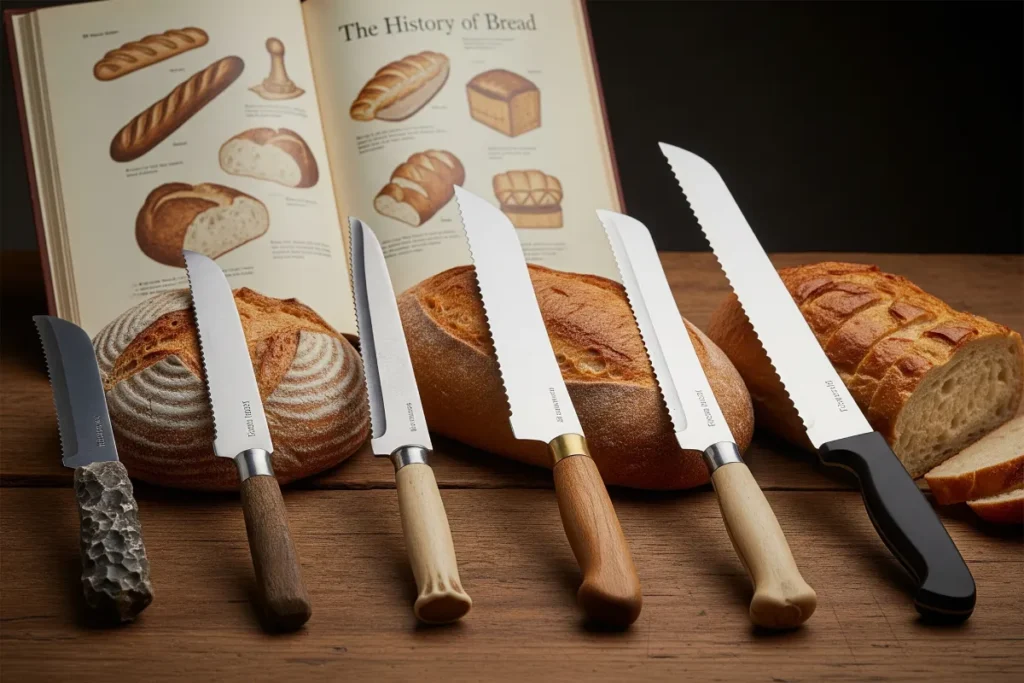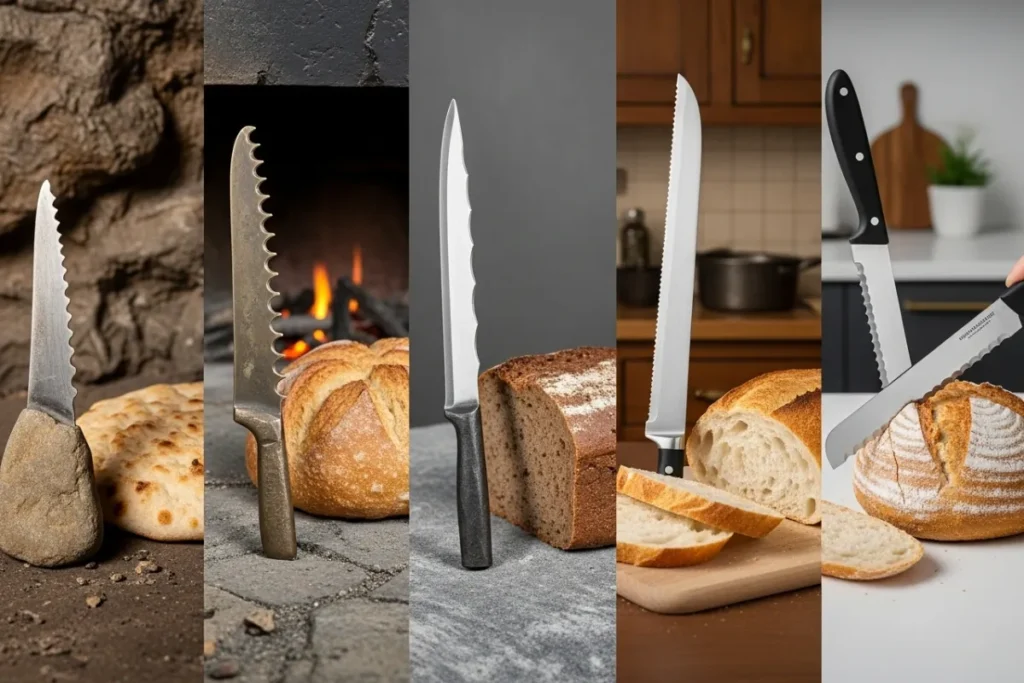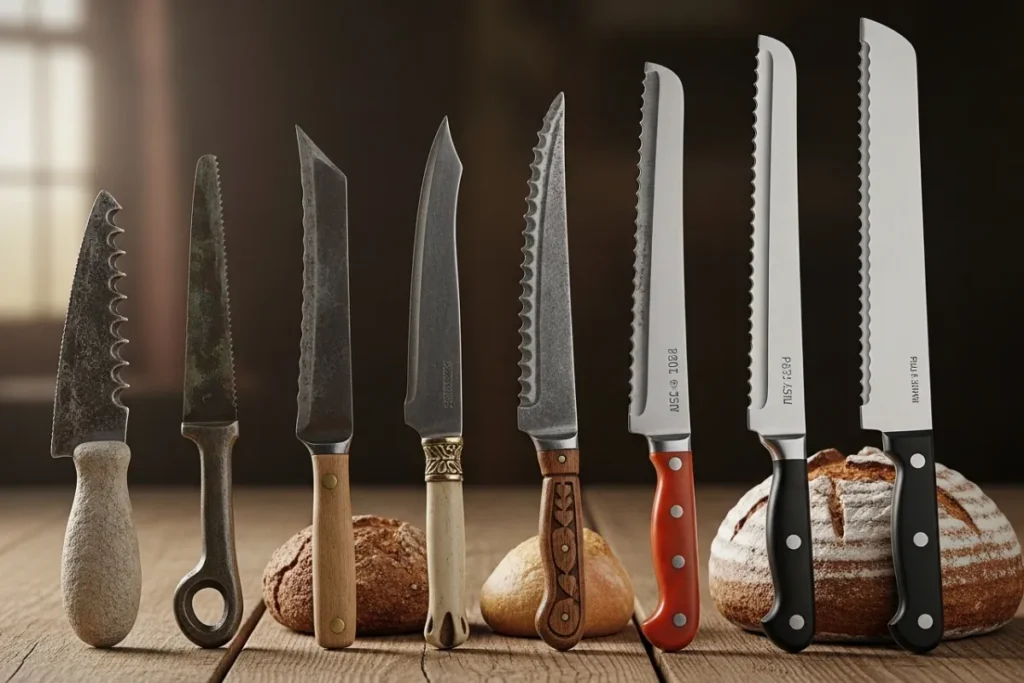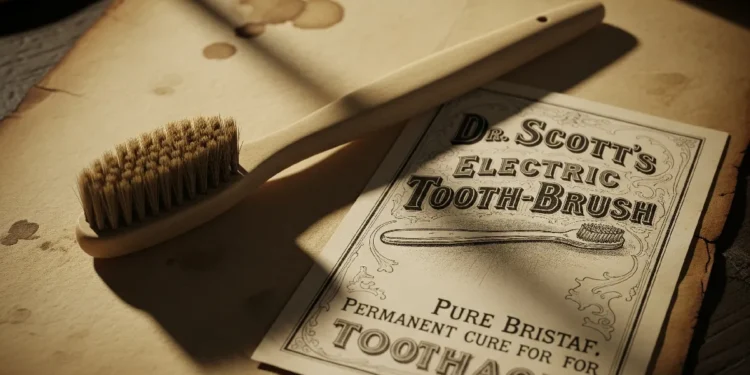Table of Contents
Introduction
The history of the bread knife begins not with a blade, but with its conspicuous absence. For centuries, the act of dividing a loaf was a messy, brutish affair—a struggle of torn crusts and compressed crumbs that reflected a world of culinary inefficiency. We rarely consider the quiet objects that populate our kitchens, yet these tools are steeped in a history far richer and more complicated than their humble functions suggest. The bread knife is a prime example. It is an instrument of quiet justice, a serrated edge that sliced through more than just bread; it cut through class, custom, and the very rituals that defined the communal table.
This article argues that understanding this simple tool is essential to grasping the subtle yet powerful ways technology shapes social dynamics. The problem is not that the bread knife is unimportant, but that its history has been overlooked, dismissed as a mere footnote in the annals of domestic innovation. Yet, its story is a compelling lens through which we can view the intersections of food access, etiquette, and class. It reveals how a change in a single kitchen utensil could redefine ideas of modernity, influence gender roles, and reflect a society’s shifting values around convenience and craft.
We will trace this remarkable journey from the communal, pre-industrial loaf to the revolutionary Christy patent of 1893 that introduced the serrated blade to the world. The narrative will then explore how the knife carved out a place in the middle-class home, becoming a subtle marker of social aspiration. We will examine its mid-century decline in the face of factory-sliced bread and its surprising renaissance during the artisanal food movement. Ultimately, by rethinking the history of the bread knife, we uncover the profound legacy of an object that did more than just slice—it shaped the way we live.
Before the Blade: The Uncut Loaf and Early Bread Rituals
Before the serrated blade entered the kitchen, the whole loaf of bread was a powerful symbol at the center of the table. The act of “breaking bread” was a ritual of community and communion, a physical representation of shared sustenance. In many households, the uncut loaf represented unity, with the head of the household holding the responsibility of its division. This single loaf, often dense and crusty from a day’s bake, was a communal resource whose distribution was steeped in tradition. This early chapter in the history of the bread knife is notable for the absence of the tool itself, forcing a reliance on custom and brute force.
Dealing with these rustic loaves was a challenge. The common kitchen knives of the era, with their smooth, straight edges, were ill-equipped for the task. They would often slip on the hard crust or compress the soft crumb, resulting in a ragged, crushed slice. Cutting bread was an act of physical exertion, requiring significant pressure that mangled the loaf’s structure. This struggle highlights a critical void in culinary technology. Before a proper tool was invented, the simple act of slicing bread was an inefficient, often frustrating process that underscored the need for a better solution.
The social dynamics of the table were carved right alongside the loaf itself. Early slicing etiquette history shows a clear hierarchy in how bread was distributed. The host or patriarch would often cut the bread, serving the most respected guests or family members first with the best part of the loaf—the end piece, or “heel,” in some cultures, or a center slice in others. Your place at the table directly influenced the piece of bread you received, making the act of division a subtle reinforcement of social status. This ritualized slicing was a foundational element in the history of the bread knife, setting the stage for a tool that would ultimately democratize the loaf.

The Christy Patent and the Serrated Revolution
The turning point in the history of the bread knife arrived in 1893 with the granting of a U.S. patent to Joseph E. Burns of the Christy Knife Company. His invention was deceptively simple yet revolutionary: a blade with a scalloped or serrated edge. This design, which featured a sharpened edge on the inside of the scalloped grooves, allowed the knife to saw through a tough crust without requiring the immense downward pressure that crushed the delicate interior crumb. The Christy bread knife patent effectively solved the core problem that had plagued kitchens for centuries. It promised a clean, effortless cut, transforming a frustrating chore into a simple, precise action.
The marketing genius behind the Christy knife was to frame it not merely as a better knife but as an essential tool for the modern home. Advertisements from the era hailed it as a scientific solution to an age-old problem, a small but significant piece of progress. This part of the history of the bread knife demonstrates a clever appeal to the era’s fascination with efficiency and innovation. The knife was sold as an instrument of domestic order, allowing for uniform, picture-perfect slices. Public reception was strong, as the tool delivered on its promise, making it a fixture in kitchens eager to embrace new technologies.
The bread knife’s evolution did not happen in a vacuum. Its invention and popularization were part of a broader wave of domestic innovation during the late 19th century, a period defined by mass production and a burgeoning consumer culture. Alongside the eggbeater, the apple peeler, and the mechanical can opener, the serrated bread knife was another specialized tool designed to bring industrial efficiency into the home. It represented a shift from general-purpose implements to a suite of specific tools for specific tasks, fundamentally altering the landscape of the American kitchen and the labor performed within it.
Slicing Through Society: The Sociology of a Culinary Tool
The widespread adoption of the bread knife initiated a quiet revolution in both kitchen labor and dining customs. What was once a task of brute force became one of finesse. The history of the bread knife is intertwined with a shift in domestic standards, where neat, uniform slices replaced torn, uneven chunks. This change democratized the act of slicing; it no longer required the strength of the head of the household to manage a dense loaf. The tool’s efficiency subtly transformed the presentation of food, making precision and orderliness attainable standards in everyday meals and reflecting a broader cultural move towards refinement.
The bread knife soon became an emblem of middle-class domesticity. Its presence in a kitchen drawer signified a home that was modern, efficient, and well-equipped with the latest consumer goods. Owning a specialized tool just for bread was, in itself, a small luxury that signaled a departure from a more utilitarian, make-do approach. This culinary tool sociology reveals how a simple object can function as a status marker. The choice to purchase a bread knife reflected access to disposable income and an aspiration to participate in a new culture of domestic consumption, where having the right tool for every job was a sign of sophistication.
Furthermore, the consequences of the history of the bread knife extended to gender roles within the home. As part of a growing arsenal of specialized kitchen gadgets, the bread knife became integrated into the domain of the housewife, who was increasingly expected to manage the home with scientific precision. The tool’s ease of use made slicing a less physically demanding task, reinforcing its place within the perceived sphere of female domestic responsibilities. This subtle shift helped solidify the kitchen as a space of specialized, gendered labor, where efficiency and order were paramount virtues for the modern woman.

The Mid-Century Decline and Modern Renaissance
Just as it had become a kitchen staple, the bread knife’s prominence was threatened by a new wave of industrial food innovation. The rise of commercially pre-sliced bread in the mid-20th century, epitomized by brands like Wonder Bread, offered consumers unparalleled convenience. For millions of households, the need to slice a loaf at home vanished overnight. This shift in consumer habits marked a significant downturn in the history of the bread knife. The once-revolutionary tool was suddenly rendered obsolete by a factory-sliced loaf wrapped in plastic, its daily purpose eliminated by the very progress it once represented.
This era represents a flawed history of the bread knife, a period of neglect where it was relegated to the back of the kitchen drawer. It became a classic “unitasker” in an age increasingly skeptical of single-purpose gadgets. Why keep a special knife for a task that was now handled by machines before the bread even reached your home? For decades, the bread knife was often seen as a relic, a tool associated with the past, with the hard work of baking from scratch that the modern world had seemingly left behind. It became an afterthought, a dusty implement pulled out only for the occasional holiday roast or uncut baguette.
However, the late 20th century’s artisanal food movement sparked an unexpected revival. As bakers and home cooks rediscovered the joy of crusty, rustic, and unsliced loaves, the bread knife was called back into service. This renaissance restored the tool’s prestige and spurred a new wave of bread knife evolution. Designers began to rethink its form and function, introducing innovations like offset handles for better knuckle clearance and specialized serration patterns engineered for everything from delicate brioche to hearty sourdough. The bread knife was no longer just a tool; it was a piece of specialized equipment, essential for anyone serious about good bread.
Rethinking the History of the Bread Knife: A Tool’s Legacy
To rethink the history of the bread knife is to see it not as a simple kitchen implement, but as a rich artifact of social and technological change. Its journey from a revolutionary invention to a forgotten unitasker and back to a cherished tool is a perfect microcosm of our shifting relationship with food, convenience, and labor. The complete history of the bread knife tracks the rise of mass production, the allure of industrial food, and the eventual return to artisanal values. It is a narrative of progress and nostalgia, revealing how a single object can absorb and reflect the complex currents of its time.
Looking forward, the bread knife evolution continues, driven by a renewed passion for home baking and craft. Today’s market offers an array of sophisticated designs, from Japanese steel blades with pointed serrations to ergonomic offset handles crafted from sustainable woods. This ongoing innovation ensures the tool’s relevance, cementing its place in the modern kitchen. The future of the bread knife seems secure, not as a universal necessity, but as a specialized instrument for those who appreciate the craft of baking and the simple, satisfying ritual of slicing a fresh loaf.
Ultimately, the humble bread knife holds a quiet but profound legacy. It challenges our assumptions about the objects we use every day, proving that even the most mundane tools are steeped in history and meaning. Its story is a powerful reminder that the items filling our homes are not just functional; they are silent witnesses to our changing values, our domestic rituals, and the subtle ways we navigate class and custom. The history of the bread knife asks us to look closer, to find the extraordinary in the ordinary, and to appreciate the rich social histories we hold in our hands.

Conclusion
In tracing the history of the bread knife, we have journeyed from the communal, uncut loaf of the pre-industrial age to the precision of the modern serrated blade. We’ve seen how the simple act of slicing bread was once a frustrating chore defined by brute force and social hierarchy. The invention of the Christy knife in 1893 was more than a technological breakthrough; it was a social catalyst that redefined domestic labor, turning a crude task into an act of effortless refinement and bringing a new standard of order to the kitchen table.
The knife’s subsequent trajectory—from a symbol of middle-class modernity to a forgotten relic in the age of pre-sliced convenience, and its eventual revival by the artisanal food movement—serves as a powerful chronicle of our changing cultural priorities. This flawed history of the bread knife, with all its peaks and valleys, perfectly mirrors society’s oscillating desires for industrial efficiency and authentic craftsmanship. Its story affirms that the tools we create are not merely functional; they are reflections of our values, our aspirations, and the economic forces that shape our lives.
Ultimately, the quiet justice of the bread knife is its ability to reveal these profound connections. The main purpose of this exploration was to show how a single kitchen tool can illuminate a much larger story of inequality, taste, and technological change. The legacy of this humble blade is a call to look more closely at the objects that populate our own homes. What stories do they tell? By examining the history embedded in our domestic tools, we can better understand the forces that have shaped our world and question the silent assumptions that govern our daily rituals.








